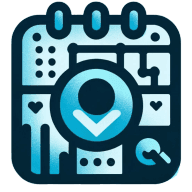4 Best Strategies for Promoting Events On Social Media
Discover the power of social media in event promotion with expert-backed strategies. This comprehensive guide offers valuable insights on leveraging social platforms throughout the entire event journey. Learn how to transform followers into active contributors, build anticipation through storytelling, and create an inclusive ecosystem that amplifies your event's reach.
- Leverage Social Media Throughout Event Journey
- Transform Followers into Active Contributors
- Build Anticipation with Narrative-Driven Content
- Create Inclusive Ecosystem with Unique Hashtag
Leverage Social Media Throughout Event Journey
Social media is one of the most powerful tools I use for event promotion and engagement, because it allows you to build momentum before, create connection during, and extend the impact after the event.
One successful example: I supported a client who was hosting a live panel on modern motherhood through her podcast brand. The event was intimate--just 30 seats--but we wanted to generate buzz, build deeper community ties, and keep the conversation going well beyond the event itself.
Here's how we used social media across three phases:
1. Pre-Event Hype (Awareness + Anticipation)
We used Instagram and LinkedIn to announce the event with a "save the date" countdown and curated visuals that reflected the tone--smart, warm, inclusive. Reels featured behind-the-scenes clips from the planning process, while static posts introduced the speakers and teased their topics. We also shared audience prompts in Stories like "What's one thing you wish people talked about more in motherhood?" to start seeding engagement.
We encouraged RSVPs via a short-form signup link and tracked conversions through Instagram Link in Bio clicks. Email subscribers also got early access with shareable Instagram Stories, which created a ripple effect of organic reach.
2. Event Day (Real-Time Engagement)
During the event, we created an "Instagrammable" moment with a branded backdrop and hashtag. Attendees were encouraged to tag the event and use the hashtag on posts and Stories. We reposted UGC (user-generated content) throughout the day to amplify attendee voices and keep virtual followers looped in.
We also had a live content strategy in place: short clips of key quotes, boomerangs of panelists laughing together, and a few mic-drop moments captured for future Reels. This not only energized online followers, but also positioned the brand as a thoughtful, credible convener of meaningful dialogue.
3. Post-Event Follow-Up (Longevity + Lead-In)
We posted a recap carousel with favorite quotes, video snippets, and tagged attendees and speakers to encourage resharing. That week's podcast episode was tied to the panel theme, and we used that content to re-engage anyone who didn't attend.
Key takeaway: Social media isn't just a megaphone--it's an invitation. By integrating it throughout the entire event journey, we transformed a one-time gathering into an ongoing conversation and created content that kept working long after the chairs were stacked.

Transform Followers into Active Contributors
I often advise clients to integrate social media as a live conversation hub rather than a flyer distribution channel. For a recent hybrid marketing summit, I recommended using Instagram Stories polls to crowdsource session topics, which drove 40% more story interactions and doubled click-throughs to the registration page.
During the event, I guided our clients to share attendee selfies with a custom event hashtag, sparking over 150 user-generated posts within two days. Post-event, I suggested hosting a live Twitter chat with speakers to sustain momentum. That method turned passive followers into active contributors and helped push ticket sales up by 25%.

Build Anticipation with Narrative-Driven Content
What I really think is that social media works best for event promotion when you use it to build anticipation, not just awareness. At Blushush, we treat every event like a narrative, with content that moves from tease to value to highlight. One successful example was a virtual brand strategy workshop where we used LinkedIn and Instagram to spotlight the real questions founders were asking.
We posted short video clips answering those questions in the lead-up to the event, used behind-the-scenes polls to involve the audience in shaping the agenda, and showcased past attendee feedback as Instagram Stories. We also created a branded hashtag so attendees could share their own insights in real time.
The result? Registrations doubled from the previous session, and post-event engagement carried on for a full week. Social media is not just about reach—it is about giving people a reason to care before, during, and after the event.

Create Inclusive Ecosystem with Unique Hashtag
Social media is pretty much baked into everything I do for event promotion. One of my go-to moves is setting up a unique hashtag and starting the chatter early--like a month out. I did this for a local biz mixer and honestly, it worked better than I expected. I shared little planning clips, tagged early signups, and made it feel like something people wanted to be part of. During the event, we had a simple photo corner with the hashtag front and center, and folks actually used it. It was cool watching the feed light up in real time. Afterward, I reposted some of their pics and reactions, which kept the energy going even after things wrapped. It's not just about promoting--it's more about creating a little ecosystem where people feel seen and included. That's where the real engagement happens.


